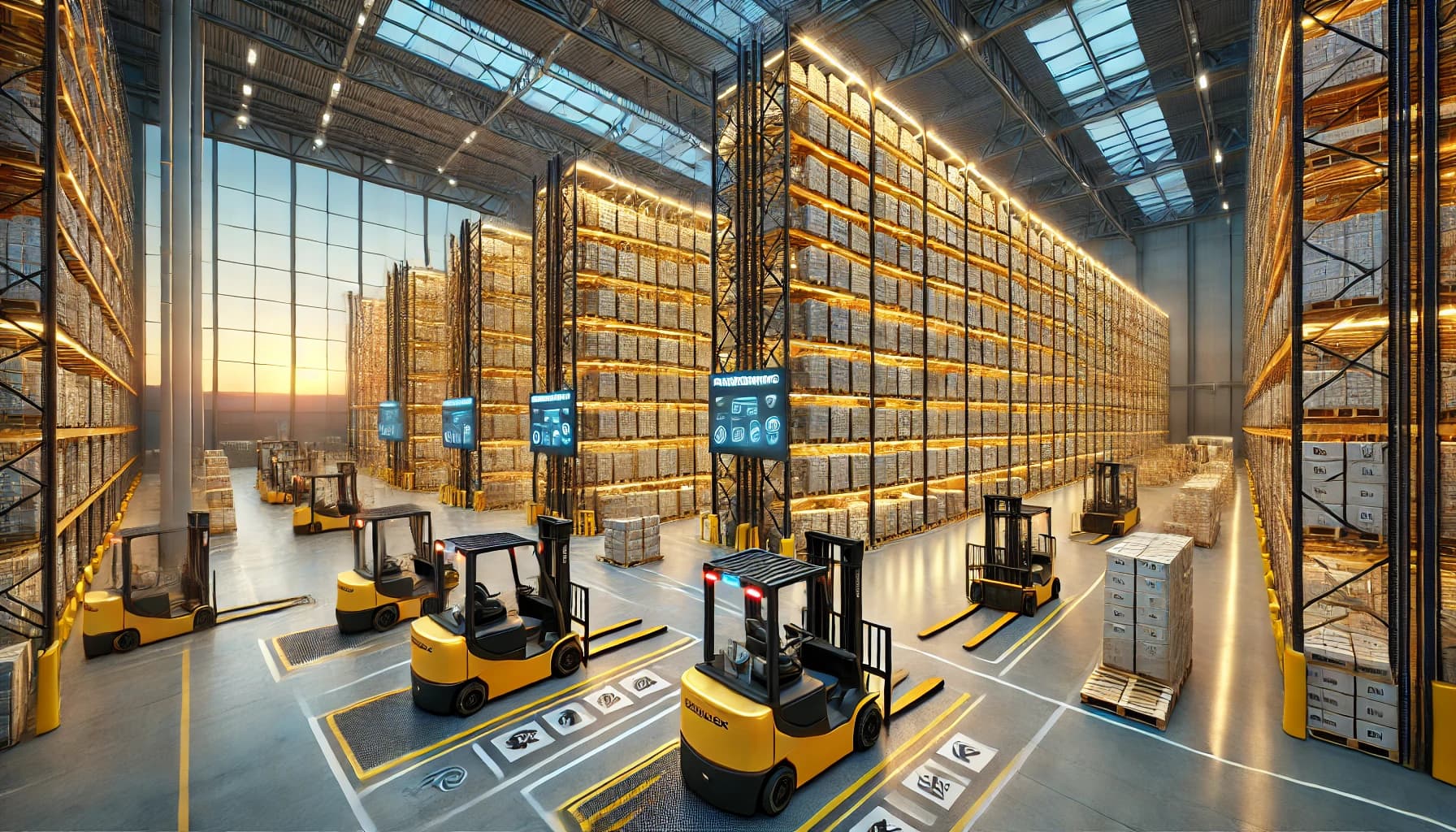
Restack Pallets to Optimize Logistics Costs in Chicago and the Midwest (2025–2040)
How restack pallets lower logistics costs and boost efficiency in Chicago and Midwest (2025–2040)
Freitty
13 May 2025, 13 min read
Restack Pallets: A Critical Strategy to Cut Logistics Costs in Chicago and the Midwest
Restack pallets have become a defining factor in transforming warehouse efficiency across Chicago and the broader Midwest. As logistics costs escalate due to labor shortages, inflation, and increasing freight demands, businesses are aggressively adopting pallet restacking strategies to streamline their operations. Between 2025 and 2040, the significance of restack pallets will continue to grow, creating both immediate savings and long-term structural benefits for logistics providers.
The State of Logistics Costs in Chicago and the Midwest
In 2024, Midwest logistics faced a perfect storm: rising fuel prices, a tightening labor market, and a surge in e-commerce fulfillment demands. Chicago, the region’s key distribution hub, saw warehouse operational costs jump by over 20% compared to 2019. Pallet handling inefficiencies accounted for a significant portion of this increase, with mishandled, poorly stacked pallets resulting in freight rework fees and delivery delays.
Restack pallets services are now viewed as a direct countermeasure to these rising expenses. Warehouses in Chicago, Columbus, and Sparks report average reductions in freight rework costs of 15% within the first year of adopting structured pallet restacking workflows.
Restack Pallets: The Short-Term ROI Impact
From a financial perspective, restack pallets generate tangible savings within the first 6–12 months. Chicago-based 3PL operators have reported:
• Up to 30% decrease in damaged freight incidents
• 25% faster order processing times
• Reduced need for emergency reworking services
By 2025, it is expected that more than 60% of high-volume warehouses in the Chicago area will integrate dedicated restacking teams or automation systems to capitalize on these savings. As these practices standardize, the long-term ROI over 5, 10, and 15 years becomes even more significant, contributing to leaner, more agile supply chains across the Midwest.
Restack Pallets: A Key Driver for E-commerce Growth
E-commerce growth continues to outpace traditional retail in the United States. With same-day delivery becoming standard across platforms like Amazon, Walmart, and Target, Midwest fulfillment centers are under pressure to optimize outbound logistics.
Restack pallets play a pivotal role in reducing last-mile delays by:
• Enhancing pick-pack efficiency
• Ensuring consistent load configurations
• Reducing outbound shipment damages
In Stockton, CA, and Reno, NV, restack pallets have helped e-commerce facilities achieve up to 40% faster dock-to-door delivery cycles. Chicago-based 3PLs that service major brands report direct improvements in customer satisfaction metrics after adopting pallet restacking protocols.
Restack Pallets and Automation: The Future of Smart Warehousing
By 2030, the Midwest will witness accelerated adoption of AI-powered warehouse systems. Automated restack pallets solutions, already piloted in San Bernardino, CA, and Denver, CO, demonstrate how robotics can cut manual labor costs by 35%.
Key technological trends linked to restack pallets include:
• AI-driven damage detection and predictive stacking
• IoT-enabled load monitoring
• Integration with warehouse management systems (WMS)
Early adopters in Chicago and Sparks are seeing lower overheads and faster payback periods on automated systems, positioning restack pallets as a foundational technology in the future of Midwest logistics.
Sustainability Gains with Restack Pallets (ESG Integration)
Restack pallets are not just about cost efficiency — they are becoming essential to sustainability goals. Companies pursuing ESG targets find that restack pallets help:
• Reduce packaging waste through optimized stacking
• Decrease CO₂ emissions via fewer repeat shipments
• Improve warehouse space utilization, reducing the need for expansion
In Greenville, SC, 3PLs have linked restack pallets to measurable improvements in their sustainability reporting, enhancing brand value while cutting operational costs.
Government Incentives and Economic Support
Federal and state programs are expanding support for warehouse modernization. In Illinois and Ohio, grants now cover up to 30% of qualifying warehouse efficiency upgrades, including pallet restacking systems.
Chicago businesses are actively pursuing these incentives, combining restack pallets adoption with broader automation investments to unlock dual benefits: immediate cost reductions and long-term competitiveness.
Real Business Success Stories: Chicago to Columbus
Case studies from Midwest hubs like Chicago, Columbus, and Sparks reveal common success patterns:
• Freight rework costs cut by 25–35%
• Labor efficiencies increased by up to 30%
• Lower shrinkage and freight damage rates
• Faster time-to-market for e-commerce orders
In Reno, a multi-client fulfillment center documented a $500,000 annual savings directly attributed to restack pallets adoption, underscoring the scalable impact of these services.
Long-Term Forecast: Restack Pallets from 2025 to 2040
Looking ahead, the role of restack pallets will only expand. By 2040, Midwest logistics hubs will rely on restack pallets as a standard operational practice. Geographies like Chicago, Sparks, and Stockton are poised to lead this transformation, capitalizing on:
• Predictive AI restacking models
• Full integration with digital supply chains
• Synergies with green logistics investments
Midwest companies that fail to adopt restack pallets risk falling behind, both in cost efficiency and service quality.
Restack Pallets: The Midwest’s Path to Competitive Logistics
Restack pallets are more than a cost-cutting tool — they are a foundational pillar for logistics modernization in Chicago and the Midwest. As supply chain pressures grow and the competitive landscape intensifies, restack pallets provide businesses with a unique advantage: lower costs, better service quality, and enhanced adaptability for the next 15 years and beyond.
You may also like

Bridging Giants: Navigating the US-China Supply Chain in a Shifting Global Landscape
Unlocking Opportunities Amidst Geopolitical Change
0 min read

Unlocking Value Together: How the Sharing Economy Is Reshaping Logistics and Beyond
The New Age of Shared Value
0 min read

Logistics Without Limits: How Franchising Is Fueling the Next Wave of Growth in the Industry
A New Era of Scalable, High-Performance Logistics
4 min read
Streamline Your Logistics Today
Partner with Freitty for smarter, faster, and more efficient cross-docking services.
